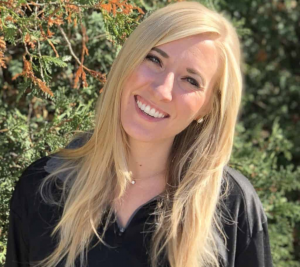Professional Liability for Professional Arborists
Professional Liability for Professional Arborists
On August 15th, 2017 a woman was walking through New York’s Central Park with her three sons when an Elm tree suddenly uprooted and fell on top of them. The woman, who was knocked unconscious, was holding an infant with her two sons in a stroller. Fortunately, the entire family was taken to the hospital and treated with non-life threatening injuries. Story over right? Well, almost a year and a half later the mother filed a two hundred million dollar ($200,000,000) lawsuit against New York City, Central Park Conservatory, and all private contractors that had done work on the tree in the past.
Two hundred million is certainly an extreme case, however in 2012 a lawsuit settled for four million dollars ($4,000,000) after a single branch fell and killed someone in New York City. Can you imagine being brought into a suit for a tree you worked on years ago? Oh, by the way, you better hope you have the right insurance coverage for defense costs and damages!
We all know insurance coverage is needed for bodily injury or property damage caused while you’re on the jobsite. This comes from your General Liability policy. However, with any tree job, there come exposures that are not going to be covered under the General Liability and will require Professional Liability specific to tree care operations. Here are a few common reasons every tree service should have Professional Liability.
Work On The Tree Itself
Think about the scenario discussed above. Wherever your crews are working they are responsible for the work being performed. Everything from working on the correct tree, using proper pruning techniques, and assessing any future tree issues are all things every tree crew does every day. If your crew fails at addressing any of these concerns, you may be exposed to a faulty workmanship claim which is usually excluded under your General Liability policy. That’s right excluded! For these exposures you must purchase Professional Liability specific to tree care operations.
Work In Area/On Nearby Trees
Believe it or not, you can be held liable for damage caused by a failed tree that you weren’t even asked to do work on. Professional tree care companies, especially those that employ Certified Arborists and TRAQ arborists, have a responsibility as soon as they step on the jobsite to give notice of any trees that could be potentially harmful. Simply put, the property owner hires an arborist because they have a higher level of understanding and awareness about trees, than the property owner. If an arborist misses something the tree care company could be held liable. Your General Liability policy certainly will not afford you protection for any lawsuit where you did not touch a tree. Professional liability is the only way to find coverage for this.
Consulting
For the arborists that only perform consulting operations, you obviously have the highest need for Professional Liability coverage as your work is all verbal/written. General Liability is for physical work done to trees, not for advice given. Whether it is consulting on one tree with a homeowner, or developing a tree management plan for an entire municipality, or acting as an expert witness in court, you’ll want to make sure you have Professional Liability policy to cover any mistakes. Also, many insurance policies are very specific to what operations they cover so please make sure everything you do is listed to avoid any potential gaps in your protection.
Training
Similar to the expert witness operations, training is often not included under a standard Professional Liability policy. Many of our clients will teach other arborists at either conferences or on-site with entire companies. From OSHA compliance training, to any of the ISA or TCIA workshops, as well as custom climbing/rigging course, there is an additional coverage you must have to protect yourself; Educator’s Errors and Omissions. This would provide coverage if you were named in a lawsuit for poor advice that led to injury or property damage.
To conclude, everybody in the arboriculture world needs some form of Professional Liability coverage either added onto their General Liability coverage or as a separate policy. Talk about this with your insurance agent to make sure you know what potential gaps in coverage exist for your business today.
If you are concerned about some of your operations not being covered under your current policy, contact ArboRisk for a free coverage review. For more in depth help, check out ArboRisk’s New Heights Thrive Package – the ArboRisk team will help you take a deep dive on not only your insurance but also your business operations, safety culture, sales and marketing techniques, and more! Stay safe!





Recent Comments